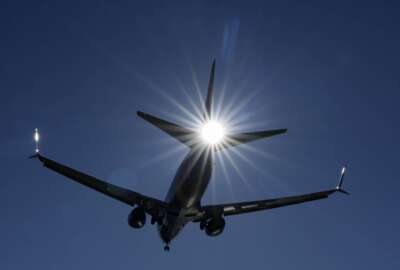The Federal Aviation Administration is rethinking its return-to-office plans, following pushback from its unions.
The FAA announced in an all-staff email on July 20 that its employees would come into the office at least three days per week — or six days per pay period — starting on Oct. 9.
FAA’s decision to bring more employees into the office falls in line with a directive from the Office of Management and Budget to have the entire federal workforce increase “meaningful” in-person work this fall — especially within the D.C. metro area.
But the FAA is putting a temporary pause on its return-to-office plans, after unions claimed the announcement was made unilaterally, and in violation of their collective bargaining agreements.
Acting FAA Administrator Polly Trottenberg and the agency’s management board, in a message to employees sent last Thursday, said the FAA “will immediately increase our collaboration across the agency and with our labor partners as we gather input on the business guidance for managers to use when updating telework agreements.”
“Until more work is done, we will hold on revising any current telework agreements, except where driven by immediate business needs, and in accordance with collective bargaining agreements,” the email states.
The FAA says it still plans to increase in-office work, but is working with its unions to craft guidance on its future workplace flexibilities. That includes remote work, as well as effective management of office space and a hybrid workforce.
“We realize increasing in-office presence can be a challenge. Every federal agency is grappling with how best to implement OMB’s direction while meeting their organization’s mission,” FAA’s email states.” Our safety mission and the demands of the growing and diversifying aviation and aerospace industry will continue to guide our decisions. It will require greater collaboration and engagement with internal and external stakeholders.”
The Professional Aviation Safety Specialists immediately filed a national grievance after the FAA made its return-to-office announcement in July. The union also submitted several information requests and participated in several high-level discussions with FAA leadership.
PASS represents 11,000 FAA employees who install, maintain, support, and certify air traffic control equipment, as well as employees who inspect and oversee the aviation industry. Its members include administrative safety professionals and logistics personnel.
PASS National President Dave Spero told members in an email Friday that the July 20 decision was a “blatant violation of our collective bargaining agreements.”
In an interview Friday, Spero said FAA managers, under the collective bargaining agreement, must modify telework arrangements on a case-by-case basis, and cannot deny telework based on “arbitrary standards” that are not specified in the agreement.
“And that’s exactly what the agency was doing at the national level … across all lines of business with their policy. They were making arbitrary decisions,” Spero said.
While FAA said it is collaborating with union officials, Spero said it remains unclear what a compromise would look like, since the union is advocating for current telework flexibilities to remain in place, “unless they identify some sort of problem.”
“If that were the case, and they were to show it using empirical data — which they haven’t done — I’m certainly not going to stand by and have someone tell us, hair on fire, ‘We have to get back to work.’ I’m not going to accept that. They’re going to have to prove to us that there’s a problem,” Spero said.
Spero said many PASS members hold jobs that are conducive to telework, because these employees often work in teams that are scattered across the country, and aren’t centralized in one particular location.
“To expect them to show up in a workplace where their coworkers aren’t doesn’t make any sense to begin with. But when they do need to show up in an office, there’s not an issue with it,” he said, adding that employees may need to appear in person for training, for example.
Spero said FAA’s earlier decision prescribed a one-size-fits-all plan for in-person work that doesn’t work best for many employees.
FAA, for example, planned to make each Wednesday an “established core day,” or mandatory in-person work day. However, Spero said many FAA employees have shifting schedules, and may not be scheduled to work every Wednesday.
“The assumption is that everybody sits in an office in Washington, D.C,. and nothing could be further from the case,” he said.
Jamil Kabbara, president of the American Federation of State, County and Municipal Employees (AFSCME) International Local 1653, which represents 2,000 FAA employees, applauded FAA for deciding to work more closely with its unions on return-to-office plans.
He said bargaining unit employees have seen a higher level of productivity with telework flexibilities.
“I have not seen any data to show that the productivity of the FAA employees and the mission … have suffered in the last three years. To the contrary,” Kabbara said.
The FAA is looping its unions more closely into its return-to-office plans, but isn’t backing down from its decision to increase in-person work.
An FAA spokesperson told Federal News Network in a statement Friday that “the agency will increase its in-office presence.”
“We are collaborating across the agency with labor partners and managers to get input on the path forward,” the spokesperson added.
Copyright
© 2024 Federal News Network. All rights reserved. This website is not intended for users located within the European Economic Area.




